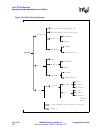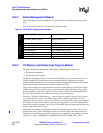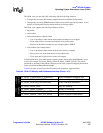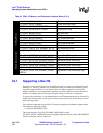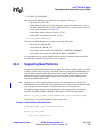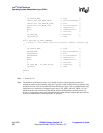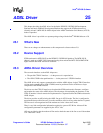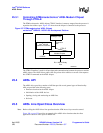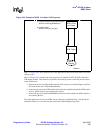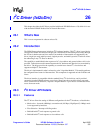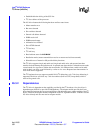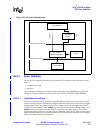
Intel
®
IXP400 Software
Operating System Abstraction Layer (OSAL)
April 2005 IXP400 Software Version 2.0 Programmer’s Guide
326 Document Number: 252539, Revision: 007
{
IX_STATIC_MAP, /* type */
IXP123_PCI_CFG_BASE_PHYS, /* physicalAddress */
IXP123_PCI_CFG_REGION_SIZE, /* size */
IXP123_PCI_CFG_BASE_VIRT, /* virtualAddress */
NULL, /* mapFunction */
NULL, /* unmapFunction */
0, /* refCount */
IX_OSAL_BE, /* coherency */
"pciConfig" /* name */
},
#elif defined IX_OSAL_VXWORKS
/* Global 1:1 big endian and little endian, address coherent map
*/
{
IX_STATIC_MAP, /* type */
0x00000000, /* physicalAddress */
0xFFFFFFFF, /* size */
0x00000000, /* virtualAddress */
NULL, /* mapFunction */
NULL, /* unmapFunction */
0, /* refCount */
IX_OSAL_BE | IX_OSAL_LE_AC, /* coherency */
"global" /* name */
}
#endif
}
Note: “|” stands for “or”.
Note: The definition of the memory map is very flexible in terms of what operating systems and
endianness modes can share memory map cells. Typically, an OS would use only one memory map
and share the same cells for big endian and little endian access types. This is exemplified above by
setting the access coherency to composite types such as “IX_OSAL_BE or IX_OSAL_LE_AC”,
which means the cell can be used for big endian and little endian/address coherent access. It is,
however, not possible to share a cell between both little endian address coherent and data coherent,
as these are fundamentally conflicting modes of operation.



